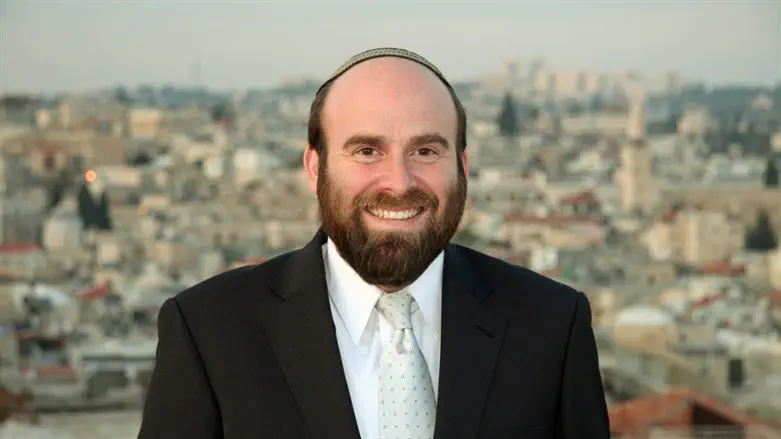
In our previous pieces, we have delved into the profound and transformative power of Torah and mitzvot in our lives. They safeguard our health and foster our personal and spiritual growth, inspiring us to reach a higher spiritual plane.
Sustaining True Life
Rebbe Akiva saw Torah learning as not just critical but essential. In response to those who questioned his teaching Torah in violation of a Roman decree, Rebbe Akiva compared our need for Torah to a fish’s dependency on water. Torah is not just an enhancer of life but a condition for it. Though we can survive physically without Torah, our spiritual life hinges upon its sustenance.
Significantly, Rebbe Akiva compared our dependency on Torah learning to that of a fish, not a human, on water. Unlike humans, who can survive three days without water, fish require constant water support. We, too, need continuous exposure to Torah to sustain our spiritual existence. Torah is not just our water; it is our oxygen, and we must commit to its continuous study.
The Netziv applied Rebbe Akiva’s message to mitzvot, explaining that the Torah links life to mitzvah observance because sustaining true human life requires spirituality. Though the Torah uses the same word, “chayim (life),” to refer to both physical and spiritual life, the latter depends upon mitzvah observance.
Onkelos highlights the distinction between chayim as spiritual as opposed to physical life by translating the word differently when it refers to life sustained by spiritual nourishment (chayei) versus life maintained by physical food (mitkayem). Only life sustained by spirituality is true life.
The Netziv saw Sefer Bereishit’s description of man’s creation as the source of this unique aspect of human life. As opposed to animals, which the Torah describes as alive the moment Hashem creates them, the Torah defines man as alive only after Hashem imbues him with a soul. True human life consists of more than that of an animal. It also includes the soul and its spiritual nourishment.
Life Itself
Sefer Devarim presents Torah and mitzvot as even more central — they not only sustain life, they are life itself. Devarim Perek 31 explains that choosing mitzvah observance is choosing life because mitzvah fulfillment is life.
What does this mean? How are Torah and mitzvot actual life?
Torah learning and mitzvah fulfillment are life's purpose and essential content. Though we need food and water to survive, mitzvah observance and Torah learning are why we are here and what gives our lives meaning. A life without Torah learning is not an authentic life.
The Rambam uses this idea to explain the exiling of a teacher with his student to the city of refuge. The gemara derives this halacha from the Torah’s usage of the word “va’chai” (and he will live) to describe the fate of an unintentional murderer.
Taken simply, “va’chai” entails physical protection and sustenance. Indeed, the gemara initially explains the word this way when it requires providing the murderer with a livelihood. It is, therefore, surprising that the gemara derives the need to exile the rebbe along with his student from this same word.
The Rambam explains that those who value wisdom, which we find through Torah learning, are considered dead without access to it. The word va’chai requires us to exile the murderer’s rebbe with him because the murderer would be regarded as dead without access to his rebbe’s teachings.
We should reflect more on this teaching of the Rambam. We devote most of our time and energy to activities that sustain and enhance our physical survival and existence, but we don’t often consider why we exist. Torah and mitzvot are the answer. They are why we were created and what we should focus on.
What Our Life Amounts To
As the world around us focuses on physical survival and leisure activities, we must constantly remind ourselves that Torah learning and mitzvah fulfillment are what truly matter — the essence of life. Ultimately, what we invest in them is what our life actually amounts to.
Rav Ovadya Yosef zt”l told the story of a rabbi who visited a town for the first time. The locals gave their honored guest a tour, taking him to the shul, the school, the mikveh, and, finally, the cemetery. The rabbi was shocked to see that all the gravestones memorialized those who had died young: Reuven, 12 years old. Shimon, 11 years old. Levi, 15 years old, and so on. “Was there a plague here?” he asked. “A pogrom? Why did they all die so young?”
“No, rabbi,” the mayor explained. “In this town, we keep track of the time we spend each day learning Torah and doing mitzvot. At the end of the day, we count up those hours and write them down on a little pad. At the end of each week, month, and year, each person tallies his total hours of Torah study. When someone dies, we add up the time spent learning Torah and doing mitzvot. For this person, it was ten years; for that person, twelve. The ages on the gravestone are their Torah ages, not their biological ones.”
Conclusion
Our last few pieces have examined different ways of explaining the Torah’s linkage of human life to mitzvah observance. These explanations are not mutually exclusive; mitzvah fulfillment can benefit us in all these ways.
The Ramban adds that the benefits we derive from mitzvot depend on how we approach them. Those who seek reward receive just that; only those who perform mitzvot seeking personal growth and life enhancement achieve these more profound and meaningful goals.
May appreciating how mitzvah observance can impact us inspire us to fulfill mitzvot with the ideal intentions and goals.
Rav Reuven Taragin is the Dean of Overseas Students at Yeshivat Hakotel and the Educational Director of World Mizrachi and the RZA.
His new book, Essentials of Judaism, can be purchased at rabbireuventaragin.com.